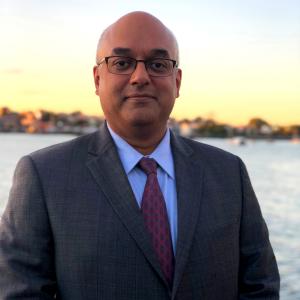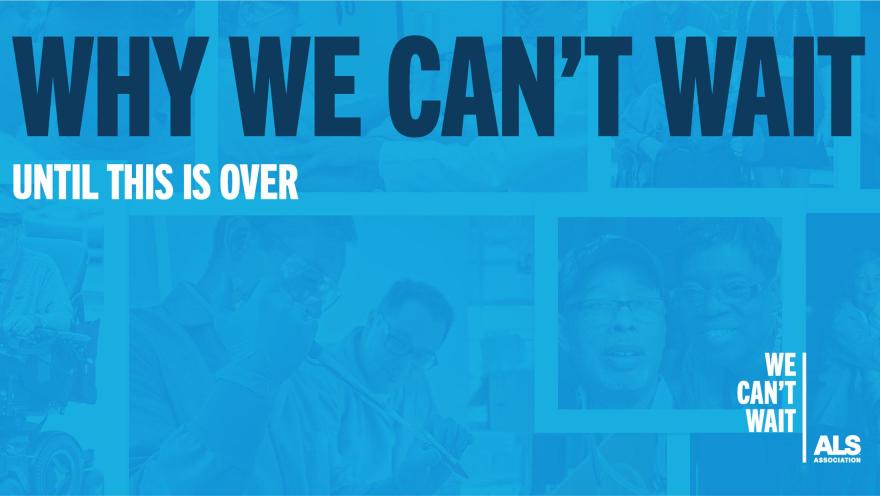By Neil Thakur, Ph.D.
In the first post of this series, our President & CEO Calaneet Balas shared a powerful reminder that ALS, “all too quickly robs people of their ability to move, speak, eat and eventually, breathe.” It’s our mission to help those affected by this terrible disease to live longer and better lives.
As leaders in this fight, The ALS Association is at the center of an increasingly diversified portfolio of research, advocacy, and care services delivery that is producing results. There are new signs of hope and we are working urgently to try to advance the most promising treatments and therapies.
In the last six years, we have committed more than $110 million to ALS research, thanks in part to the viral success of the Ice Bucket Challenge and the continued generosity of donors like you. The advances in science and clinical knowledge, along with the collaboration between the world’s top researchers, is what makes me believe it truly is only a matter of when, not if, we will discover new treatments and a cure.
My hope is born in part from the pace and nature of recent discoveries and research outcomes. One recent outcome is that AMX0035, an experimental therapy funded in part by The ALS Association and produced by Amylyx Pharmaceuticals, was well-tolerated in a phase 2 trial and showed statistically significant effect in slowing the progression of the disease. We moved immediately not just to share the good news, but to call on the FDA and the company to work together to make the drug available as a treatment option for people with ALS without delay.
We Are Making Real Progress
Since we pinpointed the first ALS-related gene in 1993, more than 30 genes have been linked to the disease. With each new gene comes renewed optimism and a new therapeutic target.
Gene discovery, as just one example, has led some researchers to explore gene-silencing technology. It’s a field of precision medicine that recently progressed to human trials. Our investment in biomarker studies that measure indicators (like cholesterol or blood pressure) that correlate with disease processes or treatment responses are another promising line of inquiry. The more we understand these markers, the more effective and precise the research community’s development of treatments become.

We’re even accelerating the rate at which we can test and evaluate treatments. Earlier this year, we supported the launch of the first-ever ALS platform trial. Already successful in cancer research, our platform trial will speed therapy development and increase patient access to possible treatments, while reducing costs. It will allow scientists to test multiple ALS drugs at the same time.
For all these medical milestones, however, I remain aware that perpetual optimism can wear on the community. ALS is still fatal. Rigorous, diligent and hard-won progress doesn’t help everyone equally. But a greater understanding of the disease yields a greater number of novel questions and hypotheses to explore.
Exploring any one of these questions could lead to a breakthrough, but we can’t know which one in advance. That’s why we try to fund as many different projects as we can and work with the federal government to increase their investment in ALS research. We also work speed up the entire ALS research process through efforts like the platform trial, and specimen and data repositories that simplify ALS scientists’ work. More studies mean more chances at of finding treatments that can improve lives and end ALS. There are more ALS research projects happening now than ever before. I am excited by all this progress, and also feeling a sense of urgency to move it even faster under COVID-19.
Real, Human Progress
As the only organization fighting ALS on every front, it is as much our responsibility to focus on the here and now of care services as it is to look toward the future of research. These are complementary, not conflicting endeavors.
Since 2014, we’ve come close to tripling the number of multidisciplinary ALS clinics. They remain the best way to extend the length and quality of life for people living with ALS. This increased capacity means it’s easier to get world class ALS care today than it has ever been.
These centers, however, are more than the sum of their parts. They’re the human face of care.
Our multidisciplinary model brings together teams of trained professionals that specialize in every aspect of ALS. It’s an approach that allows our community to receive personalized care and several therapies during a single visit. Therapies that are trialed in the lab and delivered by experts in these centers.
We Can’t Wait
ALS is such a complex disease, we will never solve it with one clinical trial. It is an investment problem. We will find solutions faster as we increase funding and the number of people working on the problem. As of this moment, we fund 171 research projects across 15 counties. These investments have a snowball effect. For every dollar we spend, the federal government has historically committed three or four dollars to the cause. The Department of Defense, for example, doubled their research funding of ALS last year. And as a result of recent advocacy efforts, where many Americans touched by ALS directly engaged Congress, they may double that funding again this year.
This advocacy work and the way we structure of our programs has motivated more scientists to study and develop therapies for ALS. Journal articles about the disease, for instance, increased by more than 20 percent in the last six years. And the competition for Milton Safenowitz fellowships—an ALS Association-funded grant for researchers studying ALS—continues to grow year over year.
Even in the midst of a global pandemic, we’re continuing our smart investment in promising research at the very edge of scientific inquiry. And it’s the potential of this transformative work that propels our concurrent commitment to care services.
We can’t wait to continue our mission. ALS doesn’t stop. Neither will we.
This post is the second in a series where ALS Association leaders share their perspective on the urgent need to advance our mission during the current pandemic, and the ways you can get involved.


Join the conversation. Please comment below.